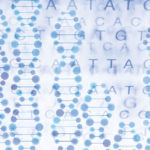Pediatric Patients Receive Higher Radiation at Non-pediatric Trauma Centers
Pediatric Patients Receive Higher Radiation at Non-pediatric Trauma Centers https://pediatricsnationwide.org/wp-content/themes/corpus/images/empty/thumbnail.jpg 150 150 Bailey Dye Bailey Dye https://pediatricsnationwide.org/wp-content/uploads/2021/03/Bailey_Dye_4-002.gif- April 19, 2019
- Bailey Dye
A novel software tool for calculating radiation burden has determined that pediatric trauma patients, evaluated using CT imaging primarily at adult trauma centers, demonstrate higher radiation exposure than those imaged primarily at a pediatric trauma center.
Computed tomography (CT) is a mainstay of the diagnosis and treatment of trauma, the leading cause of death in young adulthood. Through CT imaging, a physician utilizes ionizing radiation to visually differentiate between internal tissues of the body. This radiation, however, may confer risk toward developing a malignancy if given many times, in high doses, throughout childhood.
In a recent publication in the Journal of Surgical Research, Katherine Deans, MD, director of the Center for Surgical Outcomes Research at Nationwide Children’s Hospital, and her team determined a difference in the radiation burden of CT scanning in patients initially evaluated at a pediatric trauma center (PTC) compared to those initially evaluated at a non-PTC.
“We showed that patients initially evaluated at non-PTCs received significantly more radiation from head CT scanning, C-spine CT scanning, chest CT scanning and abdomen/pelvis CT scanning,” says Dr. Deans.
The results indicated that patients treated at non-PTCs received a higher dose of radiation, and that CT scans of all body regions except the abdomen/pelvis were more frequently prescribed at non-PTCs.
“Medical imaging is the largest source of ionizing radiation in the United States,” says Dr. Deans. “Community and adult centers are doing a great job triaging pediatric trauma patients, but what this study shows is that there may be an opportunity to educate and improve imaging practices in this population. As one of the largest children’s hospitals in the nation, we can share imaging protocols that use lower doses to image children. And locally, we can assist in more rapid transfer of pediatric patients, perhaps prior to imaging.”
The team obtained these results by creating a novel software tool that can calculate radiation exposure data and merge it with data from the electronic health record. This enables the team to identify cohorts of children who may be receiving higher radiation burden from medical imaging. Only by identifying these groups can investigators then work to reduce CT prescribing and/or radiation dosing in selected patients.
“The software can be used to power clinical decisions support at the point of care,” says Dr. Deans, whose team has already started a variety of other studies using the same technology. “We calculated that it would take seven years for a Master’s level physicist to manually derive the results that we received in about an hour of using the technology. Our hope is that this type of technology is adopted at other centers, so that we can look at the actual radiation burden across a broader and more diverse population of children in the United States.”
Citation:
Lodwick DL, Cooper JN, Gonzalez DO, Lawrence AE, Lee C, Krishnamurthy R, Minneci PC, Deans KJ. Disparities in radiation burden from trauma evaluation at pediatric versus nonpediatric institutions. Journal of Surgical Research. 2018 Dec; 232:465-483.
About the author
Bailey is a PhD candidate in the Biomedical Sciences Graduate Program at The Ohio State University, pursuing her graduate studies in the Center for Cardiovascular Research in The Research Institute at Nationwide Children’s Hospital. Her present research is dedicated to determining the molecular mechanisms of heart valve disease. She enjoys promoting science education to a broad audience through elementary and middle school classroom visits, mentoring high school and undergraduate students, and adult science outreach programs, with the goal of improving science accessibility for everyone. Bailey earned her BS in Biology at Otterbein University, where she conducted research in plant pathology, focusing on red maple toxicosis in equines. She contributes to Pediatrics Nationwide and PediatricsOnline.
-
Bailey Dyehttps://pediatricsnationwide.org/author/bailey-dye/
-
Bailey Dyehttps://pediatricsnationwide.org/author/bailey-dye/
- Posted In:
- In Brief







